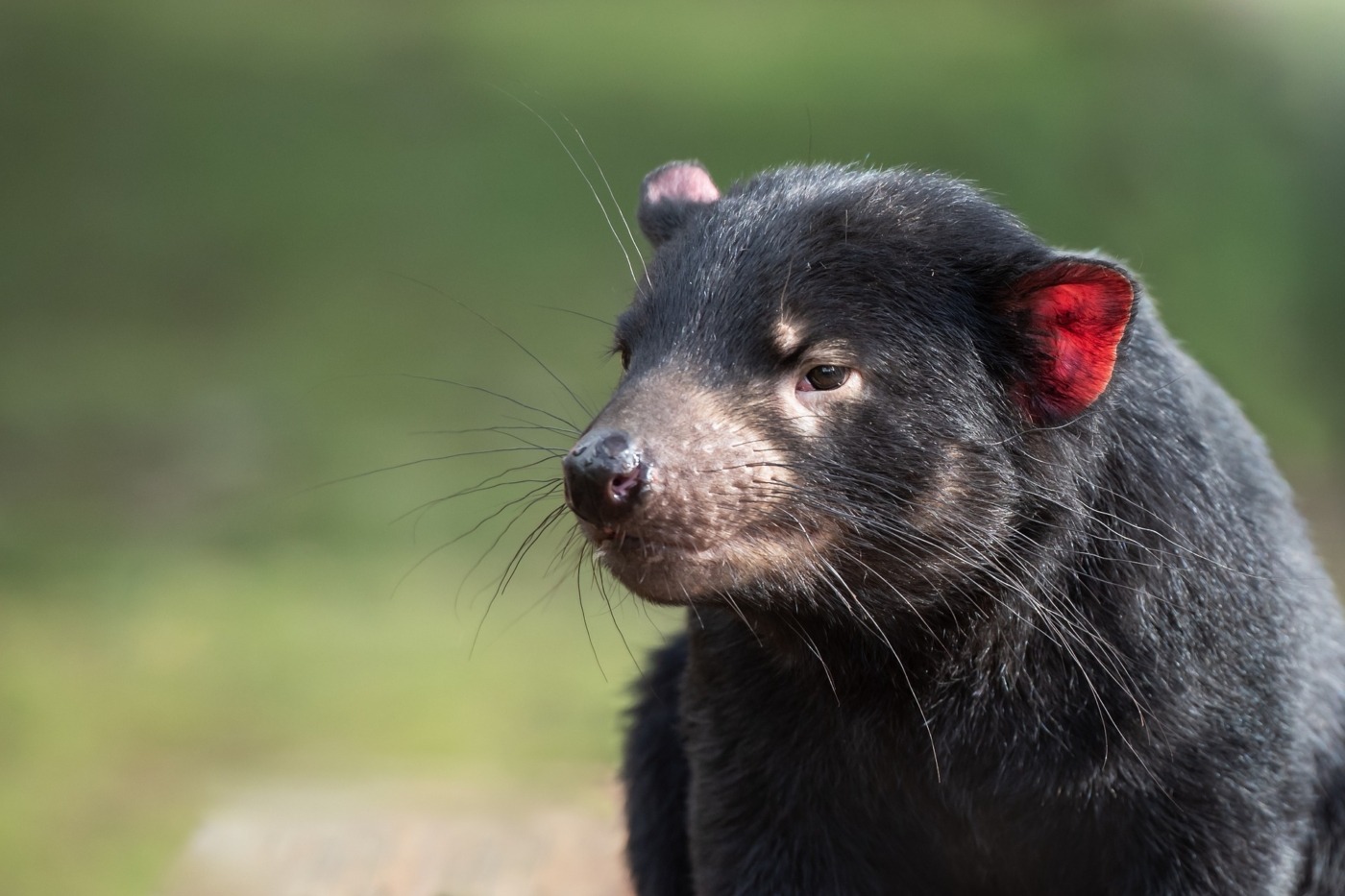Tasmanian devils are picky eaters
They’re called Tasmanian devils, but are far from demonic. These endangered animals spend their nights scurrying through the undergrowth looking for a tasty snack, and according to a recent study it appears they are picky eaters.
Tasmanian devils are marsupials that live only on the Island of Tasmania in Australia. Around the size of a cat, they are the largest carnivorous marsupial. Devils are mostly nocturnal and spend their days in burrows and caves. They were named devils by Europeans in Australia who saw their displays of teeth and heard their calls in the night. Ever since then, devils have struggled with a bad reputation.
This reputation is not earned; Tasmanian devils are not aggressive to humans. In fact, they will wait on scientist’s laps while being tagged. The demonic behaviours the Europeans first saw are really fear responses or social interactions while feeding. Devils are also really cute. They’re not quite as sweet as Koalas, but when compared to other Australian wildlife, they’re pretty much puppy dogs.
Tasmanian devils are marsupials that live only on the Island of Tasmania in Australia
Tasmanian devils prefer scavenging to hunting. They can eat pretty much everything they find, including snakes, possums and wallabies. Unlike other scavengers, devils show strong individual preferences for what they eat. Researchers at the University of New South Wales have recently published a study about this unprecedented behaviour.
The study took whisker samples from 71 devils from all around Tasmania. Whiskers, like all hairs, can be used to determine the diet of the animal they were taken from. This is because they contain stable isotopes (certain atoms that won’t decay over time) from the food the devil ate when the whisker was growing. The mix of isotopes measured in a hair can be compared to that of different foods to tell what food was eaten. On top of this, because hairs grow over a long time, the way a devil’s diet changes over time can be studies. And this method doesn’t just apply to Tasmanian devils- the same method has been used on human hairs to find out how people ate hundreds of years ago.
The team in Tasmania found only one in ten devils ate a generalist diet. The others all ate mainly one type of food, and the type they favoured varied from devil to devil.
Tasmanian devils are facing a unique threat to their survival as a species: Devil Facial Tumour Disease (DFTD). DFTD is a cancer that causes tumours to grow on a devil’s face. Eventually the tumours prevent the devil from eating and it starves to death. What’s strange about DFTD is that it is contagious- the devils transfer the cancerous cells to each other- meaning the whole populations of Tasmanian devils can be decimated by the disease. In recent years, the population of devils has fallen dramatically, from 140,000 to only 20,000. A vaccine is in development, but until then populations of Tasmanian devils are being kept safe in captivity. It is hoped that a better understanding of their feeding preferences can improve quality of life for captive devils.
The discovery that devils prefer certain foods raised several questions. Firstly, when did this behaviour start? It is thought that scavengers like hyenas have to eat whatever they can find because of competition from other animals doesn’t allow them the luxury of choice. Tasmanian devils have had no competition since the thylacine, also called the Tasmanian tiger, went extinct a century ago. Did devils develop their preferences after this? And why do they have favourites? Is it for social reasons? Do devils prefer to eat different foods to their neighbours to avoid fights? Or do they eat what is found most commonly in their area? Or do they just think certain foods are tastier?
Tasmanian devils get a bad press that they do not deserve. They are ecologically unique, and their eating habits may shed light onto how animals respond to a sudden lack of predators. In the face of widespread disease, their future looks uncertain. It is vital that devils are protected, and maybe in time they will shed their reputation.


Comments